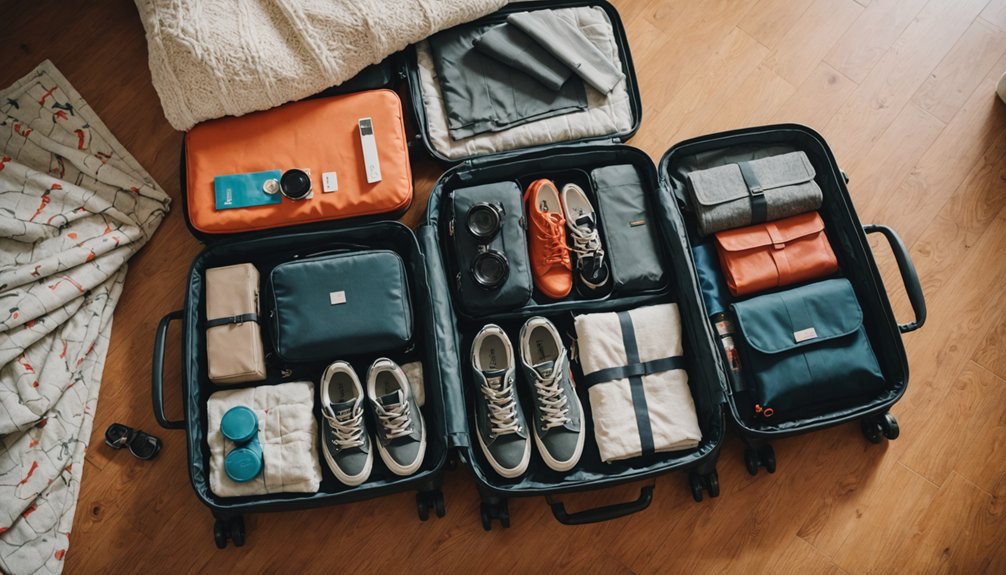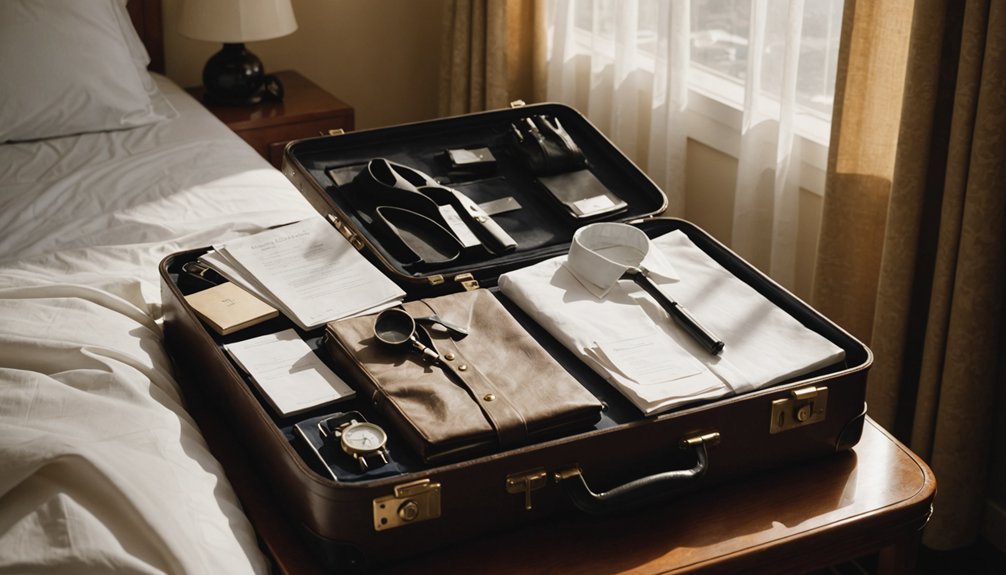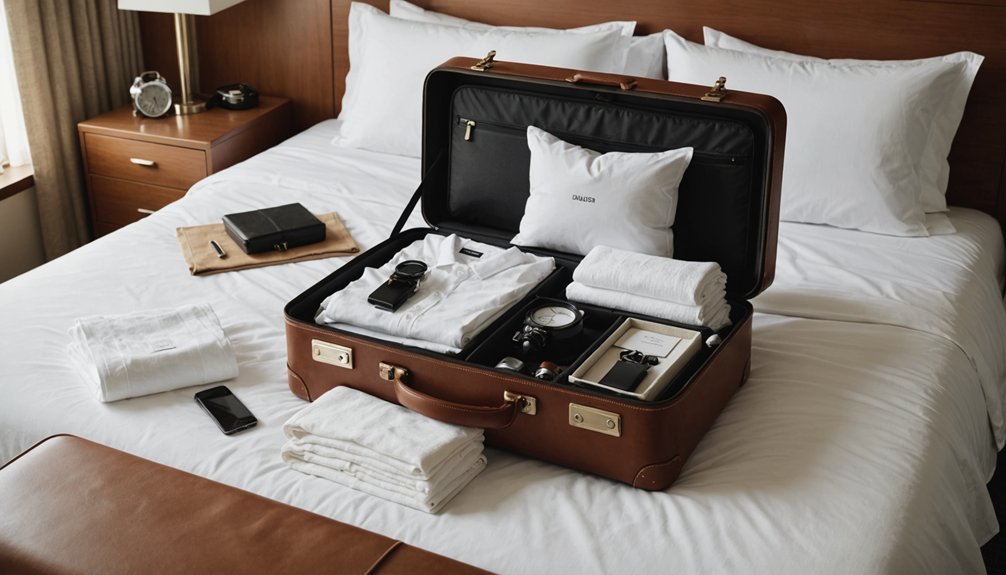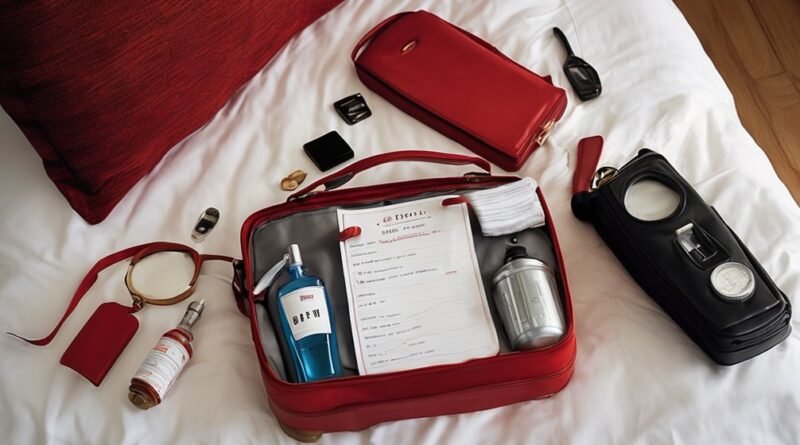Travel Checklist: How to Avoid Bringing Bed Bugs Home
When you’re preparing for your next trip, you’ve probably got your usual checklist ready: passport, tickets, and charger. But there’s another critical list you can’t afford to skip – your bed bug prevention strategy. These resilient pests have mastered the art of hitching rides in luggage and clothing, turning your dream vacation into a potential nightmare. Before you pack that suitcase, let’s explore the essential steps to keep these unwanted souvenirs from following you home.
Key Takeaways
- Pack all clothing in sealed plastic bags and keep luggage on elevated hard surfaces throughout your stay.
- Inspect hotel rooms thoroughly upon arrival, focusing on mattress seams, headboards, and upholstered furniture for signs of infestation.
- Store luggage in the bathroom or on metal racks, away from beds and soft furnishings.
- When returning home, unpack outside and wash all clothes in hot water immediately.
- Examine suitcases carefully before bringing them inside, paying special attention to seams, zippers, and pockets.
Pre-Travel Prevention and Packing Strategies

When planning a trip, protecting yourself from bed bugs starts with smart packing strategies and preventive measures.
Choose clothes that can withstand high-heat washing and drying, and pack them in sealed plastic bags or vacuum-sealed containers. You’ll want to research accommodations beforehand, checking reviews for any mentions of bed bug issues and selecting places with strong housekeeping standards.
Protect your travels by packing heat-resistant clothes in sealed containers and thoroughly researching accommodations for cleanliness and bed bug history.
Keep your packing minimal and strategic. Don’t bring unnecessary soft items like pillows or stuffed animals that could harbor bugs. Using a garment steamer is essential for treating luggage surfaces and killing any potential bed bugs and their eggs.
Instead, pack dedicated travel bags for shoes and outerwear that you can treat separately upon return. Cover your suitcase with a protective cover or plastic trash bag, and remember to pack a portable steamer if you’ll need to treat delicate items during your trip.
Room Inspection Protocol Upon Arrival

As soon as you enter your hotel room, conducting a thorough bed bug inspection can save you from a potentially ruined trip.
Since bed bugs thrive anywhere, inspections are essential regardless of the hotel’s cleanliness or star rating.
Start by placing your luggage in the bathroom or on a luggage rack away from furniture and walls.
Pull back the bed linens and examine the mattress top sheet for blood spots or dark stains. Check seams, edges, and corners of both mattress and box spring carefully.
Don’t forget to inspect the headboard and bed frame joints.
Use a flashlight to examine upholstered furniture, focusing on seams and cushion undersides.
Look behind nightstands and inspect baseboards, wallpaper, and electrical outlets.
If you spot any signs of bed bugs, report it to management immediately and request a different room – but be sure to inspect the new room just as thoroughly.
Smart Luggage Handling During Your Stay

Proper luggage handling complements your thorough room inspection to create a strong defense against bed bugs.
You’ll want to keep your bags off upholstered furniture, beds, and floors where these pests commonly hide. Instead, use elevated hard surfaces like bathroom counters, desks, or luggage racks. The nocturnal insects are known to give off a distinct rotting raspberry smell when present in large numbers.
- Store your bags in protective plastic liners or large sealable bags when not in use, creating an extra barrier against unwanted hitchhikers.
- Keep your luggage zipped and closed whenever you’re not actively using it, limiting potential entry points.
- Check your bags daily, paying special attention to seams, zippers, and handles – these are prime spots where bed bugs could attach.
For added protection, maintain your essential oil treatment by reapplying the natural repellent mixture to your luggage during your stay.
Post-Trip Inspection and Cleaning Steps
Returning home from travel demands immediate action to prevent potential bed bug infestations from taking root.
Before bringing your luggage inside, inspect it thoroughly using a flashlight, paying close attention to seams, zippers, and compartments. Seal all clothing in plastic bags and wash them in hot water, followed by high-heat drying for at least 30 minutes.
Carefully examine luggage with a flashlight before entering your home. Bag all clothes and wash in hot water immediately.
Conduct a detailed inspection of your bedroom, focusing on mattress seams, headboards, and nearby furniture. Don’t forget to check baseboards and wall hangings. Remember that 95% of bed bugs stay within 8 feet of the bed.
Install bed bug interceptor traps under furniture legs and monitor them for two weeks. For items you can’t wash, consider using a heat chamber or freezing at 0°F for four days.
If you spot any signs of bed bugs, contact a pest control professional immediately.
Signs of Bed Bugs and When to Take Action
Identifying bed bug signs early can mean the difference between a minor inconvenience and a full-blown infestation.
You’ll want to look for telltale evidence during and after your travels, including rusty blood stains on bedding, small black fecal spots, and a distinctive sweet, musty odor in sleeping areas.
1. Check your skin for clusters of small, itchy bites appearing in zigzag or linear patterns, typically containing 3-5 bites each.
2. Inspect mattress seams and furniture crevices for tiny pale yellow eggs, shed skins, or live bugs that are reddish-brown and apple seed-sized.
Remember to examine electrical outlets carefully, as these provide perfect hiding spots for bed bugs.
3. Take immediate action if you spot multiple signs – don’t rely on over-the-counter treatments, contact professional pest control services instead.
Conclusion
You’re now equipped to protect yourself from unwanted bed bug hitchhikers. By following these prevention steps before, during, and after your travels, you’ll considerably reduce the risk of an infestation. Remember, it’s easier to prevent bed bugs than to eliminate them. Stay vigilant with your inspections, and don’t skip any steps in the process. If you spot signs of bed bugs, act quickly.

